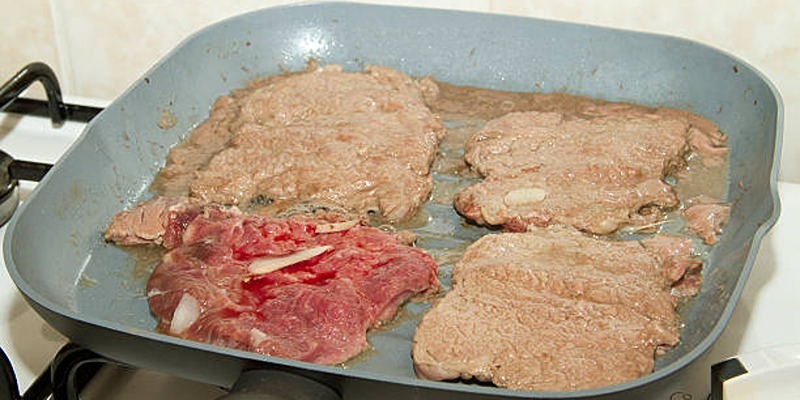Little white cysts called milia may be seen on the skin. Hidden under the skin's surface, cysts are filled sacs. Milia are most often seen on the face of the human body. A milia is merely a cosmetic issue and has no health risks. The white spots on your face may be mistaken for whiteheads, a kind of acne. Miasma is not an acne kind.
Milia are completely non-toxic and will only produce short-lived physical changes to both you and your infant. Little white pimples called cysts may appear on your or your unborn child's skin. After a few weeks, these cysts will often go away without any treatment. Although most cases of milia occur in newborns, anybody may have milia at any age. Milia is present in about 50% of healthy babies at birth. Babies born prematurely may not develop milia until later in the first year of life.
Keratin is a naturally occurring protein that may get stuck under the skin's surface and create milia. Dermatologists have hypothesized that this could result from either blocked sweat glands in infants (neonatal milia) or damaged sweat glands after skin trauma (secondary milia). Because cell turnover often decreases with age, milia might reoccur more frequently on adult skin.
Types of Milia

Milia may be broadly classified into five types:
Neonatal Milia
Newborn infants may develop milia, often known as "milk spots" or neonatal milia. Theoretically, they result from underdeveloped sweat glands more prone to blockage.
Primary Milia
Anyone, from toddlers to adults, may develop primary milia. They may go away independently, but adults frequently have to deal with them for a longer time, and they're not always temporary.
Secondary Milia
These occur in damaged or traumatized regions. The likely culprit is the loss of sweat gland function in the afflicted region's skin. Some creams might also cause these side effects.
Milia en Plaque
This less common form of milia may develop on an elevated and inflammatory area of skin known as a "plaque."
Multiple Eruptive Milia
Clusters of milia that develop gradually over many weeks or months are yet another unusual kind of milia. The most typical areas for this kind of milia to show up are the upper arms, upper part of the body, and face.
Treatment for Milia

Milia usually disappears quickly, but sometimes, using the milia removal tool takes a long timemonths or even years. You can either remove them surgically or treat them gently at home.
At-Home Care
Eliminate milia professionally using the milia removal tool; do not attempt to squeeze them out at home. Washing your face with mild soap twice daily should be a priority to prevent acne. Choose gentle items that say "paraben-free." To avoid chafing, gently pat dry your skin.
When left alone, milia typically go away after a while, although sometimes they might linger for months or even years. Since milia cysts cannot be crushed like a spot, their removal requires a little skin incision. Their contents are then extracted. Patients with neonatal milia do not need treatment. The lumps should disappear after six months, but you should see your physician if they persist. Keep your baby's skin clean.
Manual Extractions
Consultation with a dermatologist is one feasible and secure option for removing milia. Extraction alongside tretinoin for milia is the usual method these doctors use to eliminate milia. Typically, this entails making a small hole in the milia capsule. The contents are then evacuated by exerting pressure. This method is easy to follow and lessens the possibility of infection or harm to the skin.
In certain states, professional estheticians may manually remove teeth. With the necessary qualifications, estheticians may provide this therapy alongside facials and other skincare treatments. Assure the esthetician has the training and skills to perform the therapy safely.
Electrocautery
Dermatologists may employ electrocautery as well as tretinoin for mili to eliminate milia in certain cases. This technique uses the heat generated by an electric current. Direct application of this heat causes the milia to develop a scab. As time passes, this scab slips off, destroying the milia. This is the way to go if your milia won't budge after trying hand extraction techniques.
Correct electrocautery requires a professional dermatologist. Careful heat application protects the skin. For individuals considering this approach, see a dermatologist about benefits and cons. Aftercare instructions must be followed to optimize recovery.
Cryotherapy
Cryotherapy, in which a dermatologist administers liquid nitrogen to the skin to eliminate small white cysts, works well for tretinoin for mili. Freezing the milia may form a blister or scab, which will disappear as it recovers. Darker skin tones should be considered during this treatment since hypopigmentation, a skin-lightening problem, may occur. Patients considering cryotherapy should discuss side effects and advantages with their dermatologist to ensure safety and efficacy.
Dermatologists should perform this skin therapy, and patients should follow their doctor's post-treatment instructions to prevent problems and hasten recovery. Cryotherapy works, but a professional dermatologist is needed for the best results with the fewest adverse effects. Cryotherapy may cure milia safely and effectively, delivering cleaner skin hopefuls.
Retinoids
One way to manage milia is by using topical retinoids and face milia removal cream, which progressively dissolve the cysts on the skin. By increasing the skin cell turnover rate, retinoids aid in the internal cleansing of the milia. Those who are more susceptible to milia may benefit from maintaining a regimen that includes a prescription-strength retinoid. This method treats current milia while promoting faster skin renewal, preventing new milia from forming. A skincare specialist may recommend retinoid composition and strength based on your skin type and condition.
Exfoliation
Exfoliating brushes or glycolic acid treatments alongside face milia removal creams may progressively diminish or prevent milia. Topical therapies, retinol, and retinoids work well on little milia, but doctors recommend direct extraction by a specialist for larger ones. Maintaining healthy, clean skin may need light exfoliation. Exfoliating the skin makes it smoother and prevents milia-causing dead skin cells.
Use skin-type-appropriate exfoliants to avoid irritation. Glycolic acid and other chemical exfoliants break down dead skin cell connections, making them simpler to remove. Rejuvenating the skin helps control milia and offers a more luminous, even complexion. Physical exfoliation methods, like brushing, remove dead skin cells gently.







